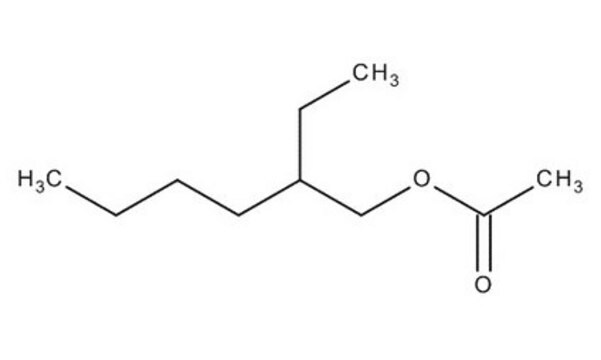268038
Methyl oleate
technical grade, 70%
Synonym(s):
Methyl cis-9-octadecenoate, Oleic acid methyl ester
About This Item
Recommended Products
grade
technical grade
Quality Level
vapor pressure
10 mmHg ( 205 °C)
Assay
70%
form
liquid
refractive index
n20/D 1.452 (lit.)
bp
218 °C/20 mmHg (lit.)
density
0.874 g/mL at 20 °C (lit.)
functional group
ester
SMILES string
CCCCCCCC\C=C/CCCCCCCC(=O)OC
InChI
1S/C19H36O2/c1-3-4-5-6-7-8-9-10-11-12-13-14-15-16-17-18-19(20)21-2/h10-11H,3-9,12-18H2,1-2H3/b11-10-
InChI key
QYDYPVFESGNLHU-KHPPLWFESA-N
Looking for similar products? Visit Product Comparison Guide
Related Categories
General description
Application
Storage Class Code
10 - Combustible liquids
WGK
WGK 1
Flash Point(F)
235.4 °F - closed cup
Flash Point(C)
113.0 °C - closed cup
Personal Protective Equipment
Regulatory Listings
Regulatory Listings are mainly provided for chemical products. Only limited information can be provided here for non-chemical products. No entry means none of the components are listed. It is the user’s obligation to ensure the safe and legal use of the product.
FSL
Group 4: Flammable liquids
Type 3 petroleums
Hazardous rank III
Water insoluble liquid
JAN Code
268038-1L:
268038-VAR:
268038-BULK:
Choose from one of the most recent versions:
Already Own This Product?
Find documentation for the products that you have recently purchased in the Document Library.
Customers Also Viewed
Global Trade Item Number
| SKU | GTIN |
|---|---|
| S495247-1EA | |
| 268038-1L | 4061826134580 |
Our team of scientists has experience in all areas of research including Life Science, Material Science, Chemical Synthesis, Chromatography, Analytical and many others.
Contact Technical Service








